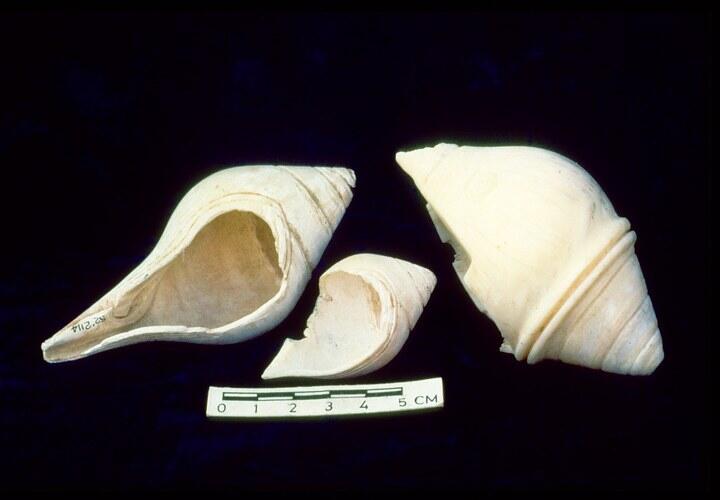Libation vessels made of the conch shell Turbinella pyrum. One of these is decorated with vermilion filled incised lines. A single spiraling design is carved around the apex and a double incised line frames the edge of the orifice. This type of vessel was used in later times for ritual libations and for administering sacred water or medicine to patients.
AIthough the presence of a specialized shell industry and the widespread use of shell are well documented at sites of the Indus Civilization (2500-1750 B.C.), the early stages of this industry were not known until recent excavations at the site of Mehrgarh, Pakistan. It is fortunate that the sample of shell artifacts from Mehrgarh is relatively large because very few neolithic or early chalcolithic sites have been excavated in Balochistan or the Indus region, and little or no shell has been reported from this period. Because of this lack of comparative data, however, the significance of the Mehrgarh sample must be kept in perspective, especially since the site is located in a transitional zone at the edge of the Indus plain and the highlands of Balochistan.

